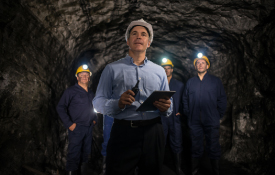Surface mining has historically been the default worldwide, and for good reason: It’s safer, more economical, and less complex than underground mining. Traditionally, underground mining was only considered if reaching the mineral deposits was not possible with surface mining, or if the quality of the mineral deposits was great enough to offset the significant additional costs associated with underground mining.
Current trends are pushing mining underground
Environmental concerns, political pressure, greater scarcity of resources and other factors are steering the trends toward underground mining. The quality of ore deposits accessible through open-pit mines is steadily decreasing. As mines age, it takes greater machine and manpower to derive the same quantity of material.
Surface mining typically has a larger geographic footprint, which can create greater disruption for nearby landowners. And because topsoil is removed, there’s greater risk of pollution from surface runoff, which can be highly acidic. That runoff and topsoil removal can also create ecological disruptions for decades to come, even after mining is complete. Given this new reality, the trend toward avoiding underground mining is on a reverse course.
Download white paper to know more

